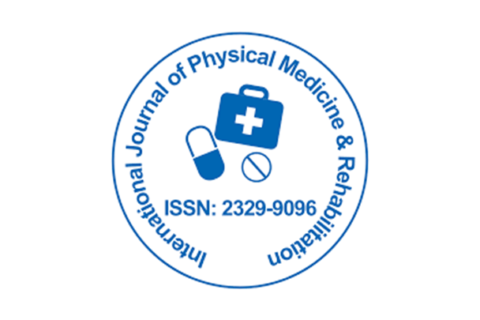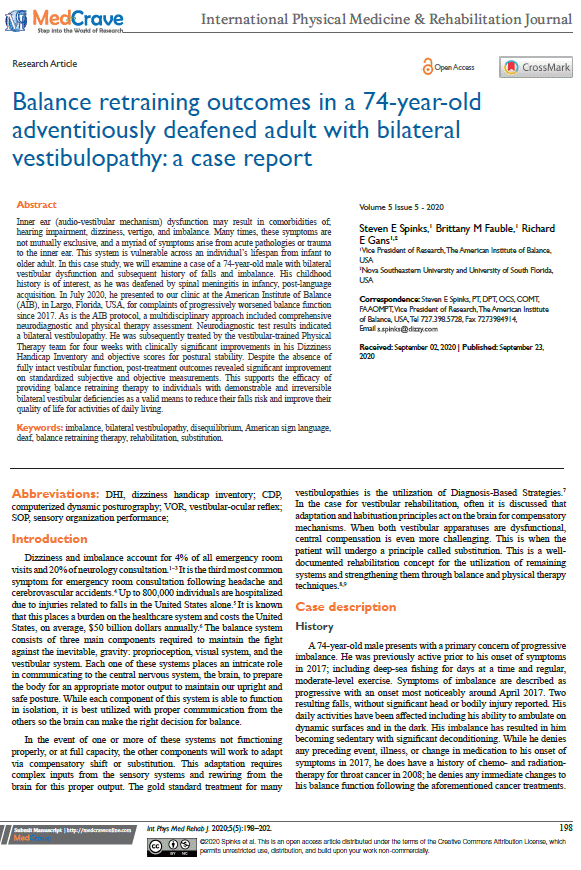
Balance retraining outcomes in a 74-year-old adventitiously deafened adult with bilateral vestibulopathy: a case report
Published on: September 28, 2020
 Int Phys Med Rehab J. 2020;5(5):198‒202.
Int Phys Med Rehab J. 2020;5(5):198‒202.
International Physical Medicine & Rehabilitation Journal
Volume 5 Issue 5 – 2020
Steven E. Spinks, Brittany M. Fauble, Richard E. Gans
Abstract
Inner ear (audio-vestibular mechanism) dysfunction may result in comorbidities of; hearing impairment, dizziness, vertigo, and imbalance. Many times, these symptoms are not mutually exclusive, and a myriad of symptoms arise from acute pathologies or trauma to the inner ear. This system is vulnerable across an individual’s lifespan from infant to older adult. In this case study, we will examine a case of a 74-year-old male with bilateral vestibular dysfunction and subsequent history of falls and imbalance. His childhood history is of interest, as he was deafened by spinal meningitis in infancy, post-language acquisition. In July 2020, he presented to our clinic at the American Institute of Balance (AIB), in Largo, Florida, USA, for complaints of progressively worsened balance function since 2017. As is the AIB protocol, a multidisciplinary approach included comprehensive neurodiagnostic and physical therapy assessment. Neurodiagnostic test results indicated a bilateral vestibulopathy. He was subsequently treated by the vestibular-trained Physical Therapy team for four weeks with clinically significant improvements in his Dizziness Handicap Inventory and objective scores for postural stability. Despite the absence of fully intact vestibular function, post-treatment outcomes revealed significant improvement on standardized subjective and objective measurements. This supports the efficacy of providing balance retraining therapy to individuals with demonstrable and irreversible bilateral vestibular deficiencies as a valid means to reduce their falls risk and improve their quality of life for activities of daily living.